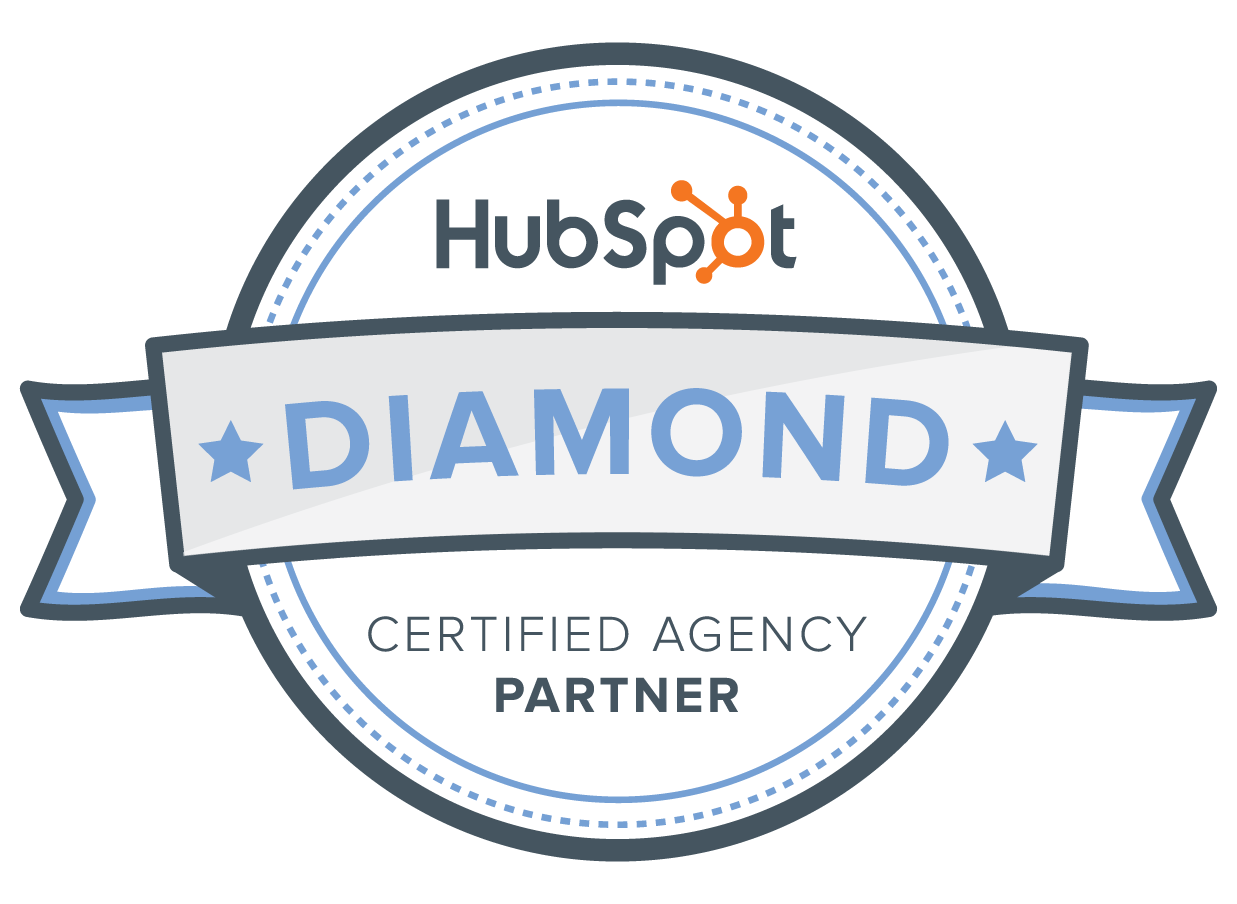INBOUND. What started as a small (but mighty) conference with just a few scores of dedicated marketers has recently morphed into a mega event that tens of thousands of people flock to from across the globe.
If this is your first time attending the INBOUND conference, you may be wondering:
- Is the conference right for me and my team?
- What pass should I get?
- Is the virtual conference worth it?
- How do I prepare?
Our team is proud to have over 60 years of combined INBOUND conference experience. In this article, we aim to answer all of your questions about getting the most from INBOUND 2023.
But don't just take our word for it. We spoke with Laura Moran, HubSpot’s Director of Global Events Programming & Revenue, about what to look forward to most at this year's conference.
We will keep this page updated with everything you need to know about INBOUND 2023 this year, so feel free to bookmark or circle back!
First, let’s start with the basics.
When is INBOUND 2023 this year?
The INBOUND conference takes place from Tuesday, September 5th through Friday, September 8th.
Is INBOUND in-person or virtual this year?
Great news! INBOUND will be both virtual AND in-person this year. The conference is a completely in-person experience but will also be live streamed for free on HubSpot’s YouTube channel.
Who is speaking at INBOUND this year?
HubSpot recently announced that there will be more than 100 speakers this year on topics including sales, marketing, and customer success.
The full agenda is now LIVE! Check it out here.
Here is a list of some of the big-name speakers who have been announced:
- Reese Witherspoon presents Lessons on Innovation, Leadership, and Navigating Change
- Andrew Huberman joins HubSpot co-founder Brian Halligan for the session Fueling Focus and Creativity
- Derek Jeter covers The Captain's Playbook: Strategies for Success
- Steven Bartlett presents Focus on the Future: Navigating the Next Decade
- Guy Raz showcases How They Built HubSpot
- Morgan DeBaun shares the sessions Black@INBOUND x Ask Me Anything With Morgan DeBaun and Scaling Through Community and Connection
- Dr. Yvette Noel-Schure builds your curiosity with the sessions Black@INBOUND x Ask Me Anything With Dr. Yvette Noel-Schure and Crafting a Flawless Narrative: Lessons in Brand Building
Check out the Speakers page here for the full, most up-to-date list. Or, view the full agenda by viewing the Agenda page for all sessions.
You can follow @INBOUND on Twitter for the most up-to date speaker information. Or bookmark: www.inbound.com/
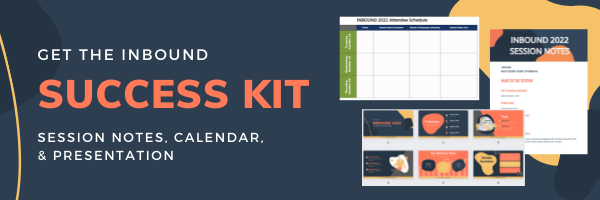
What's new at INBOUND this year?
- Mobile friendliness: Navigating INBOUND has never been easier, thanks to the recently unveiled INBOUND mobile app. Curate your conference experience, sync sessions to with your calendar, reserve seats with the tap of a button. Get started by downloading the app today on Apple or Google Play.
- New ways to network: This year’s agenda boasts an exciting spread of speakers and events, but the INBOUND team is placing more emphasis than ever before on finding new ways to meaningfully network with your fellow professionals. Keep an eye out for larger community groups and more intimate meetup sessions throughout the event.
- Connections that “klik”: This year’s conference is powered by Klik badges, which make it easier than ever to connect. Simply hold your badge next to another attendees’ to share and receive contact information. Your badge will store your new connections and share them on the mobile app.
Who is the INBOUND conference for?
INBOUND is no longer just a marketing conference. In fact, we could argue that anyone with any job in the world can find value in attending INBOUND. However, certain roles and job focuses will see the most value. These include marketing and sales managers, customer success teams, and HubSpot users.
In general, the conference will focus its breakout sessions on:
1. Marketing Teams:
Help attendees dive into the latest advances in marketing and learn about everything from content creation strategy to the most recent developments in SEO. This track is a great fit for marketing managers, content strategists, writers, and SEOs.
2. Sales Teams:
Show attendees how to take an inbound approach (read: more human, helpful) to sales, including sharing strategies and tactics they can use to close more deals and delight their prospects. This track is a great fit for sales executives, sales operations/enablement, and sales managers.
3. Customer Success Teams:
Educate attendees on how to deliver a remarkable customer experience that places empathy at the core of every relationship. This track is meant to include content that encompasses all aspects of customer success (this includes everything from successful upmarket servicing to customer success and sales alignment tips). This track is a great fit for account managers and executives, as well as anyone in a customer-facing support role.
4. HubSpot Software Users:
Teach attendees how to get the most out of the HubSpot software from your perspective as a top HubSpot user with sessions from helpful product deep dives to case study based transformation stories. This track is a great fit for anyone who uses - or is thinking of using - HubSpot’s software.
5. Marketing/Revenue Operations Teams:
INBOUND is rife with opportunities for marketing and revenue operations teams to learn from operations experts, connect with other business leaders, and experience new industry tools and technologies.
6. Business Inspiration:
HubSpot always saves some big names for business inspiration.
Pro Tip: Subscribe to the INBOUND mailing list to stay in the know!
What INBOUND pass should I get?
There are currently two passes to choose from this year: Starter Pass and Powerhouse Pass. If you just want to see the big names, the Starter Pass is for you. If you’re interested in getting some hands-on education, you’ll want to go with the Powerhouse Pass.
Here are the core differences between the two passes to help you decide:
|
Ticket Type
|
General Admission
|
VIP Pass
|
|
Pricing:
|
$675 - $1,499 (price varies by tier)
|
$1,699 - $1,899 (price varies by tier)
|
|
Access:
|
Access to all in-person content and programming
Special hotel rates (while rooms are available)
Lunch for individual purchase
Access to INBOUND at Night and other networking opportunities
|
Access to all things general admissions
Exclusive welcoming party on September 5th, 2023
Access to the VIP lounge
Complimentary lunch
Reserved seating for Spotlight sessions
Advanced registration and VIP check-in area
|
|
Best suited for:
|
Great fit for those seeking the in-person INBOUND experience without the bells and whistles.
|
This is the ultimate INBOUND experience for attendees looking to make the most of INBOUND 2023.
|
How can I get more hands-on with the conference?
If you love INBOUND as much as we do, you might be looking for ways to get more involved this year. In previous years, the conference team provided a handful of channels for individuals and businesses to get more involved. We expect there to be similar opportunities this year. These include:
- Sponsorship: Directly market to more than 26,000 attendees with a sponsorship package. This is a great way to boost visibility to your brand.
- Social Channels: We highly recommend following INBOUND on Twitter and Instagram for the most up-to-date information. Follow the hashtag #INBOUND2023, and make sure to use it in all of your conference content as well!
- Meetups: Join meetups to to connect with peers so you can swap ideas and grow your network of professionals.
We Asked HubSpot: Is the virtual conference worth it?
 Our clients asked this a lot last year. The in-person conference was such an incredible way to network, engage, and learn directly from speakers. Many of our clients wondered if they would get that same experience virtually.
Our clients asked this a lot last year. The in-person conference was such an incredible way to network, engage, and learn directly from speakers. Many of our clients wondered if they would get that same experience virtually.
We asked Laura Moran, HubSpot’s Director of Global Events Programming & Revenue for some INBOUND insider insight.
Q: What is your advice for someone who is hesitant to attend a virtual inbound versus the in-person one?
Jump in, the water is warm! There's no doubt digital events are different than in-person but the experience can be just as valuable. At INBOUND, we've designed the digital event experience with the at-home attendee in mind, meaning we're programming and scheduling content in a way that allows attendees to design a schedule tailor made for them and works with the time they have in the day. Digital events also significantly broaden the audience which means there are more people to connect with and learn from throughout the experience.
Q: How can attendees get the most out of the virtual conference this year?
A: You control your own destiny. You can dip in and out of content and experiences that are relevant for you. You can create a schedule that works with your personal schedule and revisit sessions and elements of the event you may have missed the first time around on-demand. And, if done right, networking at digital events can be even more effective than in-person. Search the attendee database, learn who's at INBOUND, who's in which networking session and send them a message to connect. No awkward hovering around the bar waiting to sneak a peek at someone's nametag necessary.
How to Prepare for the INBOUND Conference
To get the most ROI from your INBOUND experience, preparation is key. Here are some expert tips from our team who has more than 60 combined years of INBOUND experience:
1. Decide who on your team is going to INBOUND. (Or advocate to go yourself!)
Marketers, sales reps, customer service, account management, and leadership can all see incredible value from attending INBOUND’s breakout sessions. It’s even a great fit for interns, new staff, or all-star employees who could use some professional development. Anyone who uses HubSpot’s software is going to get a ton of value from attending as well, with new product announcements and trainings at the center of the INBOUND experience.
It’s a no-brainer to advocate to attend virtually this year, with both a virtual AND an in-person experience available.
If you’re advocating for yourself to go, here are some tips:
- Send an email to your boss with a goal in mind: I want to attend to learn XYZ
- Frame it as a professional development opportunity
- Offer to compile your learnings and share them with the team as a training
- Offer to take over your company’s social channels for engagement and networking during the event
- Highlight a specific speaker, session, or content track you plan to focus on
- Offer to attend virtually with a great client or customer so you can develop your relationship together and share learnings
2. Buy your tickets early. The earlier the better
The general admission pass is a fraction of the cost of the VIP pass. But you can still save big by buying your passes early. The full price for a General Admission in-person was first listed at $675 and will increase steadily as we get closer to the conference. Usually in over $100 intervals.
How to get the best price for INBOUND: There are usually early-bird and flash sales available at discounted pricing. The best way to get the best price?
Subscribe to the INBOUND newsletter email here. This is the best way to stay on top of the occasional flash deal. We aren't sure if they will be offered this year, but it's worth keeping an eye on. If you're a HubSpot customer, it's worth reaching out to your HubSpot Account or Customer Success Manager to see if they are privy to any deals coming down the pipeline.
3. Reserve your hotel early
We can't stress this one enough. You do NOT want to wait until the last minute to get rooms for you and your team.
Tens of thousands of people attend INBOUND.
And while Boston is a big city, great deals on hotels and other housing will go fast. Trust us!
We highly recommend staying as close to the Seaport District as possible. This enables you to walk to the conference. And many of the best networking and after-conference events are in that area.
Check out HubSpot's hotel partners for the best location and the best deal here: https://www.inbound.com/hotels
What's the public transit like getting to INBOUND 2023?
We really can't stress enough how important it is to book your hotel as early as possible. You'll get the most benefit from your experience by being able to walk there.
Otherwise, you may need to arrange for transportation to and from the conference from another area of the city. This is easy to do with rideshare apps, which are readily available during the conference. But as a former Bostonian (GO SOX!), the public transit leading into the conference area is a C+ at best.
The Silver Line bus will get you to the conference center. But it's not the best area for the "T," Boston's subway system.
If you're not able to stay close by, try taking the subway or train to South Station and walking the 0.7 miles to the conference area.
4. Connect with your HubSpot rep
If you use HubSpot, looping in your HubSpot representative or account manager is a great way to get more ROI. Let them know you’re attending and that you want to stay up to date. They can give you the inside scoop on sessions, speakers, or networking that aligns with your HubSpot goals. And if networking is key, they may be able to connect you with other HubSpot customers for meetups. If you haven't met them in person, chances are, they'll be at the conference!
We've really loved the opportunity to grab a coffee with our HubSpot reps.
5. Register for sessions early
This is much more important if you're attending the conference in-person. But it’s a great idea to register early for your most-wanted sessions. This will allow you to make sure the time is blocked in your calendar for preparation and note-taking.
In-person sessions DO fill up! So if there are a few you're really looking to attend, registering early will make sure you can make it in.
It's also a great time to connect with the speaker on LinkedIn and Twitter for an early jump on social visibility.
And on that note, we also recommend blocking off your calendar early - whether you're attending in-person or virtually.
INBOUND sessions last all day. We recommend fully committing to the experience by not sprinkling in your work duties. Or, if you simply can’t get away, limit your day-to-day to the beginning or end of your sessions.
The agenda is now live!
6. Make a team session calendar
Ee usually send a handful of our people to INBOUND each year. One thing that’s important to our INBOUND investment is making sure our team is covering a lot of session bases.
To help manage who is going to which session, we make a team calendar to spread the INBOUND love. When there’s more than one person attending a single session, those two people can sync up to compare notes and takeaways.
One of the best parts about a virtual conference is the ability to view your session at a later time. If two of your sessions overlap, or a really important customer needs your ear, you can circle back to it.
But setting up your schedule and registering early is a great way to ensure you're getting ROI from multiple team members attending.
Now is a great time to review the agenda and start assigning sessions to your team!
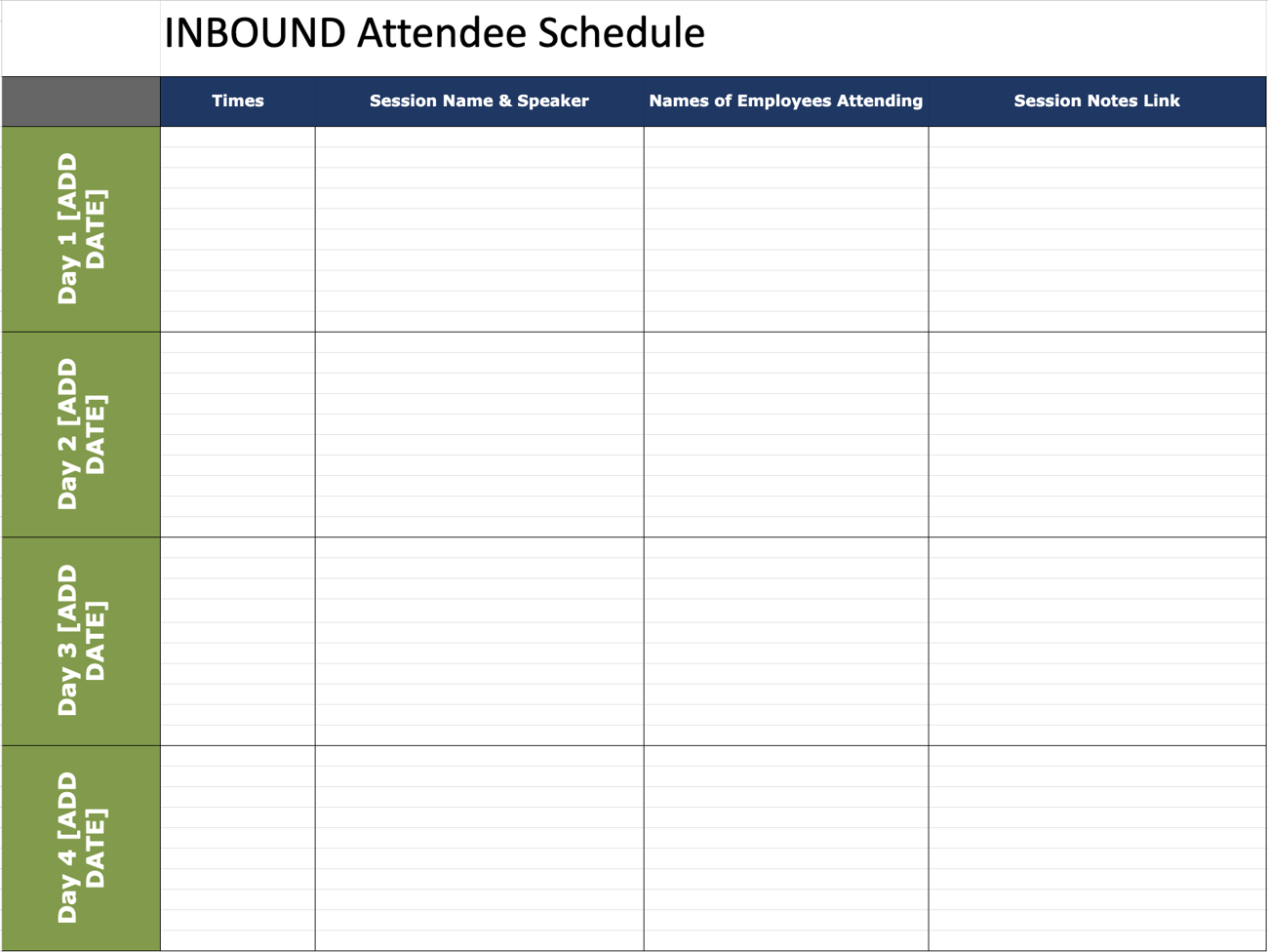
Here’s a copy of our team’s session calendar so you can use it for your business.
HOW TO ACCESS THE CALENDAR: To make a copy of this document, first open it in Google Sheets using the link above. Then go to File > Make a Copy and you're done! Now you can edit it for your team's registered sessions.
7. Make a note-taking template (or use ours!)
One of the things we’ve learned is that having standardized notes for our team is a game-changer when it comes to presenting and sharing our findings. Not only does it make the information accessible and searchable for everyone, but it allows us to look back on past INBOUNDs.
Our note template includes:
- Attendee name
- Name and date of the session
- Speaker name
- Speaker’s social channels (and contact information if they share it!)
- Session notes and key takeaways
- Session quotes (for easy social publishing!)
- Session screen captures and slide photos (for those summary slides you want to save for later)
We made a copy of our note template in Google Docs so you can make a copy and use it, too!
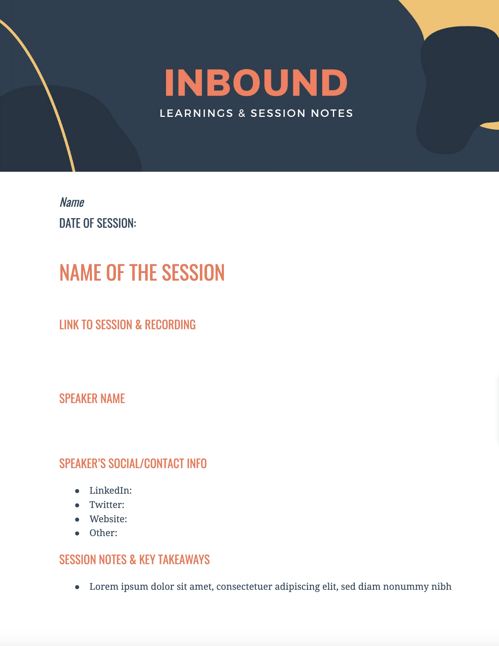
Here's a copy of our team's session notes so you can make a copy for your team!
HOW TO ACCESS THE DOCUMENT: To make a copy of this document, first open it in Google Docs. Then go to File > Download and you're done! Now you can edit it for your own team's notes.
8. Determine how you will share findings
What’s the point of going to INBOUND if you can’t share and apply your new knowledge? Everyone who attends INBOUND at our company is responsible for putting together a brief presentation of their most important findings. (That’s where the notes really come in handy!)
Use Canva for a flashy, easy-to-use presentation template that will really impress your boss.
But there are many other ways to share your learnings. These might include:
- Share quotes on social media, while tagging the speaker for visibility and engagement (Use the hashtag: #INBOUND2023)
- Write a blog post about how what you learned will apply to your business, industry, or customers
- Share your notes with customers who might find them interesting
- Use what you learned to make changes to your own marketing, sales, and customer service practices
- Sync up with other attendees for shared or syndicated content creation
- Create a video summary of your takeaways
Depending on how or what you want to share, adjusting your note-taking template will help you capture information as you go.
Need to present your session notes to your team? We've got you covered there too! Use this INBOUND presentation template we built in Canva!

HOW TO ACCESS THE PRESENTATION TEMPLATE: First, open the link above. Then select the purple "Use Template" button. You may need to create a Canva account. But don't worry, it's free! Plus, it's a great marketing and sales tool we recommend everyone use.
9. Schedule your networking early
One of the hard parts about the virtual conference is the opportunity for last-minute coffee-and-chat sessions with new friends can be minimal. So that’s why it’s critical to network early and schedule time for sharing information.
Our team usually has a quick-connect on exciting new announcements after the virtual sessions. But we also sync up with our clients who are attending so we can share thoughts there, too.
The good news? Since the conference is also in-person this year, there are plenty of opportunities to network.
That's why we recommend you try to stay somewhere local. Many of the local restaurants become post-conference networking hubs.
Create a dedicated slack channel so you can share big wins, new ideas, and session notes with your team.
And perhaps schedule a lunch or dinner zoom that you can invite people to as you meet them!
We’re excited about the new networking opportunities to be announced for INBOUND 2023, and we’ll update those here!
Keep an eye on opportunities to network at the conference as well. Talk to the sponsored booths. Attend an after-party. Be sure to have your business cards handy! They'll fly out of your wallet, trust us.
Are you an introvert and not thrilled about networking in person (Hi... I'm Kate... I also hate networking...) Then network on social media with the #INBOUND2023 hashtag! The INBOUND team always puts together awesome social challenges like scavenger hunts. It's a great way to get involved without any awkward conversation.
Will we see you at INBOUND this year?
We're always excited to connect with new friends and colleagues who are just as excited for INBOUND 2022 as we are. If this is your first year attending, reach out!
We're happy to share some tips and advice.
And we're here to help if you need an extra hand implementing a new marketing strategy for this year and beyond. Let us know if you want to meet up! The Conveyor team can usually be found at one of our restaurant classics sharing a beer and new digital marketing trends. Meet up with us!

Want to take the INBOUND Success Kit to-go?
Just fill out the form and we'll shoot off the links to our team session calendar, session notes, and INBOUND 2023 presentation slides. That way, they're in your inbox any time you need them in the coming months. Plus, we don't believe in spam. (So your email is safe with us.) Thanks for stopping by to learn more about INBOUND. We hope to see you there this year!

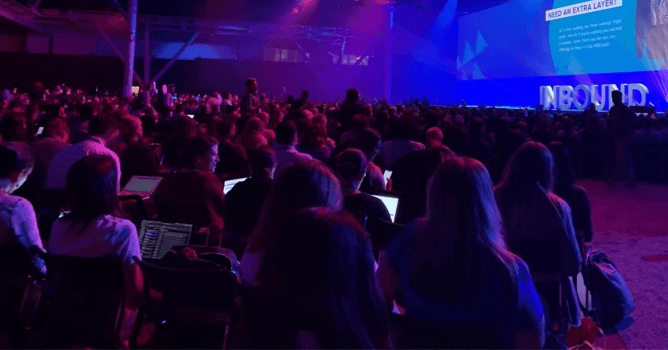

 Our clients asked this a lot last year. The in-person conference was such an incredible way to network, engage, and learn directly from speakers. Many of our clients wondered if they would get that same experience virtually.
Our clients asked this a lot last year. The in-person conference was such an incredible way to network, engage, and learn directly from speakers. Many of our clients wondered if they would get that same experience virtually.








